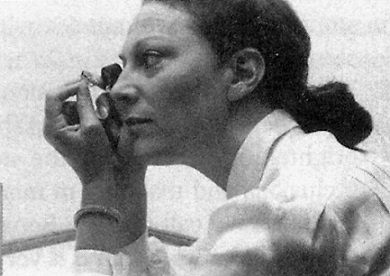
Many of you may be shaking your heads in agreement, yearning for the “good old days” when people bought diamonds just because they were pretty. I understand that nostalgic attitude, but I also remember how much misrepresentation – both unintentional and deliberate – occurred, and the numerous tricks by which the unscrupulous would not only make the sale, but also build a reputation as “the best place” to get a “bargain”…at the expense of honest, knowledgeable jewelers!
In this three part series it will become clear that being an honest, knowledgeable jeweler is the best way to make a sale, but it's how that knowledge is used which can make all the difference.
Some Old Fashioned Sales Trickery
I still remember tricks that were commonplace in the 1940s and 1950s – and which may still be found from time to time today – such as dabbing indelible ink on the culet of a diamond so the diamond would appear much whiter – temporarily – but long enough to close the sale. I remember some salespeople who would casually rub their hand through their hair before comparing a diamond they were trying to sell to one belonging to a competitor. So for those of you who are too young to remember such a time, by running a hand through their hair, they would coat their hand with the greasy hair tonic used back then to style hair. Then, they’d take the diamond belonging to the competitor and place it in the greasy hand – thereby reducing its brilliance and adding a yellowish tint. The result was guaranteed: the customer could quickly see which diamond was whiter and more brilliant…ensuring the sale of the non-coated diamond!
The New Age of Diamond Grading
The age of “diamond grading reports” entered the jewelry scene as a response to what was going on, by knowledgeable people who saw not only the need for an independent and reliable grading system but as a way to gain a sales advantage and set themselves apart as a knowledgeable, reliable source for diamonds. This remains the case today; like it or not, no one buys a fine diamond in this day and age without a “report,” typically one from the GIA (Gemological Institute of America), but also reports from other respected laboratories. To find out more about diamond certificates, read the eBook Key to Certs.
Guiding Confident Customers to Buy The Right Diamond
Today it has reached a point where salespeople are not only relying on a “report” to know the quality of the diamonds they are selling, but in addition, customers will now often come into the store telling the salesperson exactly what they want. This has contributed to the current situation because the salesperson may end up selling what’s on a report rather than using their own knowledge to guide the customer to look at various combinations that might result in their seeing a diamond that meets their needs even better!
Most customers only think they know what they want. This presents an opportunity as well as a challenge for salespeople; especially those whose own knowledge of the 4Cs can help customers understand what their options really are, even when they may not be what the customer has originally asked for. A good salesperson will listen, and then use their deeper understanding of the 4Cs to take control of the sale to show not only diamonds that the customer has requested, but diamonds that might be an even better choice than what the customer had requested…diamonds that meet both the emotional needs and budget constraints…in a way that enables the buyer to get a diamond even larger or more beautiful than the buyer ever dreamed of getting!


 RapNet Blog
RapNet Blog






